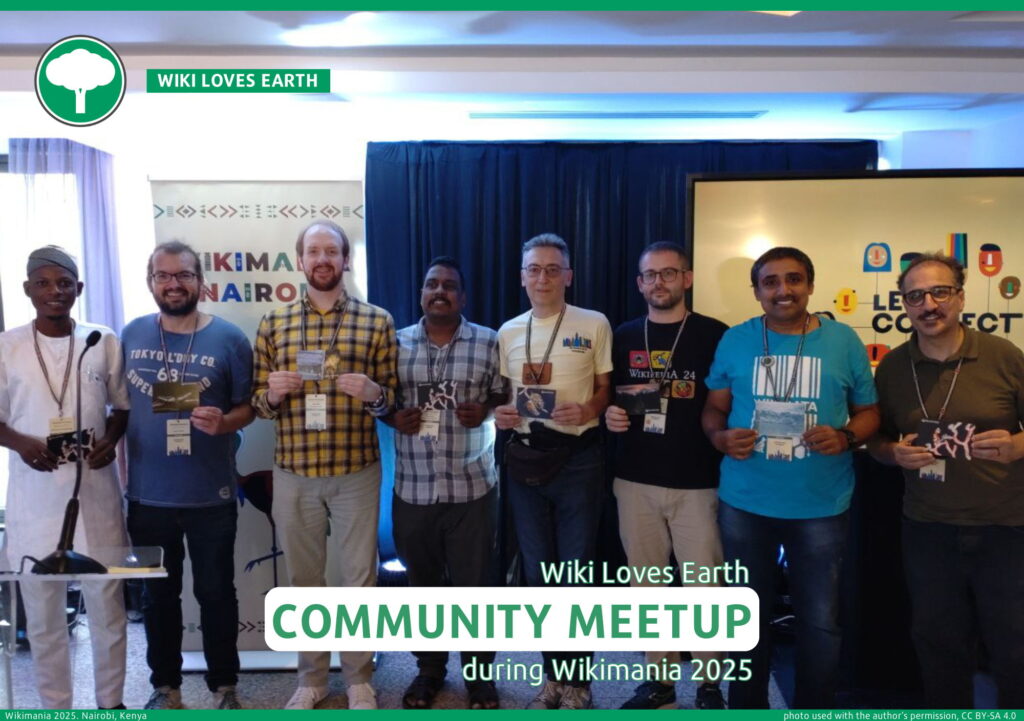On 7 August, during the Wikimania 2025 conference in Nairobi, the Wiki Loves Earth community meetup took place!
Organizers from Germany, Malta, Ghana, Italy, and India, together with the international organizer, spent a valuable and inspiring time together.
We enjoyed a warm round of introductions, shared the latest contest updates, and exchanged useful tips on organizing the competition. Participants also picked up WLE postcards and stickers as a little keepsake.
A big thank-you to everyone who joined — we are already looking forward to the next time we connect!










